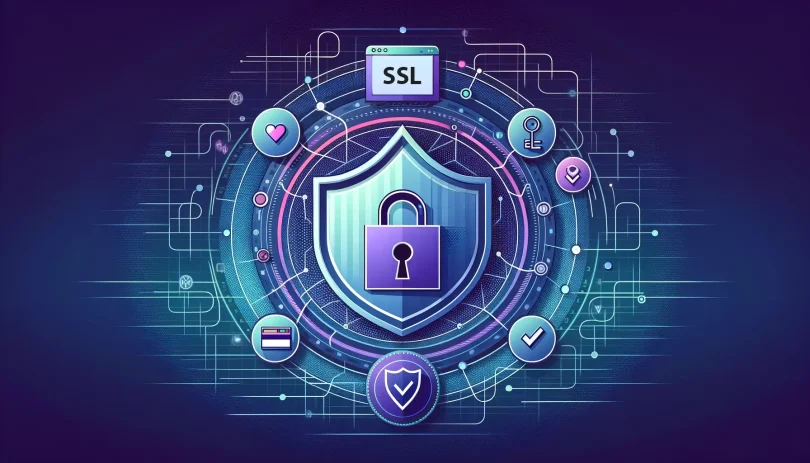Why SSL Wildcard Certificates Are Game Changers
As websites grow, they often require multiple subdomains—for example, blog.example.com, shop.example.com, or mail.example.com. Securing each subdomain individually with a standard SSL certificate is not only expensive but also time-consuming. That’s where the SSL wildcard certificate comes in.
A wildcard SSL certificate allows you to secure an unlimited number of subdomains under a single main domain with one certificate. It offers both cost-efficiency and streamlined security management. In this guide, we’ll explore everything you need to know about SSL wildcard certificates: what they are, how they work, their benefits, setup process, and more.
What is an SSL Wildcard Certificate?
An SSL wildcard certificate is a type of SSL certificate that secures a domain and all of its subdomains at a specific level. The wildcard character * is used to indicate any subdomain.
For example, an SSL wildcard for *.example.com will secure:
- www.example.com
- blog.example.com
- mail.example.com
- store.example.com
But it will not cover deeper subdomains like shop.us.example.com.
Benefits of SSL Wildcard Certificates
1. Protect Unlimited Subdomains
Once installed, the wildcard SSL secures all subdomains at one level, saving you from buying separate SSL certificates for each.
2. Cost-Effective
Instead of purchasing and renewing multiple SSL certificates, a wildcard certificate secures everything in one go—cutting down significantly on long-term costs.
⏱️ 3. Easier Management
A single certificate means easier installation, renewal, and management. Especially helpful for IT teams handling multiple digital properties.
4. Enhanced User Trust
Just like standard SSLs, wildcard certificates provide HTTPS encryption, a padlock icon in the browser, and assurance that the site is secure.
5. Boost SEO
Google prioritizes HTTPS-enabled websites in search rankings. A wildcard SSL ensures all your subdomains benefit from this boost.
When Should You Use an SSL Wildcard?
You should choose an SSL wildcard when:
- You run a website with multiple subdomains.
- You frequently add new subdomains.
- You want simplified SSL management.
- You’re a SaaS business offering custom subdomain structures (e.g., client1.yourapp.com).
Use Case Example:
A university with domains like students.university.edu, faculty.university.edu, and library.university.edu can use a wildcard certificate to cover all these subdomains at once.
How SSL Wildcard Works
SSL wildcard certificates use a single private key and certificate to encrypt traffic to the main domain and any first-level subdomain.
Example:
Wildcard Certificate for: *.yourdomain.com
Covers:
- login.yourdomain.com
- api.yourdomain.com
- admin.yourdomain.com
But not:
- user.login.yourdomain.com
- dev.api.yourdomain.com
For deeper levels, you would need a multi-domain SSL or multi-level wildcard SSL, which is a more advanced (and costlier) solution.
Types of SSL Wildcard Certificates
SSL wildcard certificates come in a few different validation levels:
✅ 1. Domain Validated (DV) Wildcard SSL
- Fast issuance
- Basic encryption
- Best for personal websites or blogs
2. Organization Validated (OV) Wildcard SSL
- Validates domain + organization details
- Ideal for businesses and corporations
Note:
Extended Validation (EV) SSL certificates do not support wildcard domains.
How to Get and Install an SSL Wildcard Certificate
Step 1: Choose a Certificate Authority (CA) or Trusted Provider
Popular providers include:
- Sectigo (formerly Comodo)
- DigiCert
- GoDaddy
- GlobalSign
- Namecheap
- SSLs.com
Step 2: Generate a CSR
A Certificate Signing Request (CSR) needs to be generated on your server, with the Common Name (CN) field set to *.yourdomain.com.
Step 3: Complete Validation
Depending on whether you choose DV or OV:
- DV validation is typically done via email or DNS record.
- OV validation involves verifying your company’s legal existence and domain ownership.
Step 4: Install the Certificate
Use your hosting provider’s SSL tools or your server’s admin panel (like cPanel or Plesk) to install the wildcard certificate.
Step 5: Update Your Website Configuration
- Update links to HTTPS.
- Set up 301 redirects from HTTP to HTTPS.
- Test for mixed content errors.
Wildcard SSL vs. Multi-Domain SSL
| Feature | Wildcard SSL | Multi-Domain SSL |
|---|---|---|
| Secures | Unlimited subdomains of one domain | Multiple unrelated domains |
| Example | *.example.com | example.com, example.org |
| Flexibility | High for subdomains | High for different domains |
| Cost | Generally lower | Higher, based on domain count |
If you need to secure multiple different domains, wildcard SSL is not for you. Go with a Multi-Domain SSL (SAN Certificate) instead.
Common Mistakes to Avoid with SSL Wildcard
- ❌ Installing on the wrong subdomain level (e.g., expecting it to cover a.b.example.com)
- ❌ Forgetting to renew the certificate on time
- ❌ Not updating all hardcoded HTTP links
- ❌ Assuming it provides EV-level validation (it doesn’t)
Wildcard SSL Pricing Overview
| Provider | DV Wildcard SSL Price | OV Wildcard SSL Price |
|---|---|---|
| Sectigo | $49 – $150/year | $100 – $300/year |
| DigiCert | $300 – $500/year | $400 – $700/year |
| GoDaddy | $150 – $300/year | $250 – $500/year |
| Namecheap | $40 – $100/year | $90 – $200/year |
| Let’s Encrypt | Not available (no wildcard support for browsers) | N/A |
Prices may vary based on features like warranty, customer support, and issuance speed.
Maintaining Your SSL Wildcard
Once you install your SSL wildcard:
- Monitor its expiration date
- Renew before expiry to avoid browser warnings
- Reissue it if adding a new server
- Run regular SSL security scans
Conclusion: Is SSL Wildcard Right for You?
If your online project involves multiple subdomains and you want a cost-effective, secure, and manageable SSL solution, then the SSL wildcard certificate is an excellent investment. It simplifies your certificate management, ensures HTTPS for all your subdomains, and strengthens your site’s security posture. CVE-2025-21587
Whether you’re a startup, a SaaS provider, or a large business managing various subdomains, now is the time to secure them all with one smart move — get an SSL wildcard certificate today.





